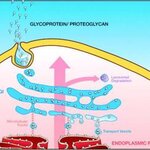Genetics & Molecular Biology

Los alumnos deberán analizar información reciente en los temas indicados en el programa. Al finalizar el curso serán capaces de comprender la relación que existe entre los distintos tipos del metabolismo y de integrar dicho en relación al funcionamiento de la célula.
Asimismo adquirirán las bases teóricas necesarias para asimilar nueva información en ese campo de estudio.
Laboratorio de practicas
Prof. Q. Ángel Gabriel Díaz Sánchez
angel50404@hotmail.com

Tangential Science: it's not necessarily science, but it's still funny.
1. Ancient beer is apparently all the rage! Wired and Switched (Switched wrote about it shortly after Wired but the news is old so let's assume they get their ideas from Wired) found out that you can 'resurrect' bacteria from millions of years ago, thanks to the preserving powers of amber. The result? Brewer's yeast. We could have saved them both some time and had them read Jurassic Beer - How Long Does It Take To Get A Good Brew? published here a year ago by yours truly. Those…

Researchers at the University of California Riverside (UCR) have developed a new mid-season maturing variety of tangerine. They call it DaisySL, for for Daisy seedless. It is made from an irradiated bud of the seedy diploid mandarin cultivar 'Daisy,' that is a hybrid of the mandarins Fortune and Fremont
Supervised by staff scientist Timothy Williams, the planting of the trees and performed evaluations and selections of promising varieties were meticulously monitored. It was 'DaisySL' that had the right characteristics he and Mikeal Roose, a professor of genetics in the Department of Botany…

Our cells are controlled by billions of molecular 'switches' that react to our environment. All creatures, from bacteria to humans, must monitor their environments in order to survive. They do so with biomolecular switches, made from RNA or proteins. For example, in our sinuses, there are receptor proteins that can detect different odors. Some of those scents warn us of danger; others tell us that food is nearby.
UC Santa Barbara researchers say they have developed a theory that explains how these molecules work and their findings may significantly help efforts to build biologically…

Scientists say they have discovered a unique 'DNA signature' in human sperm, which may act as a key that unlocks an egg's fertility and triggers new life.
Drs David Miller and David Iles from the University of Leeds, in collaboration with Dr Martin Brinkworth at the University of Bradford, say they have found that sperm writes a DNA signature that can only be recognized by an egg from the same species. This enables fertilization and may even explain how a species develops its own unique genetic identity.
Without the right 'key', successful fertilization either cannot occur, or if…

Scientists in New York and North Carolina say they have assembled the first functioning prototype of an artificial Golgi organelle, a key structure inside cells which helps process and package hormones, enzymes, and other substances that allow the body to function normally.
They say their 'lab-on-a-chip' device could lead to a faster and safer method for producing heparin, the widely used anticoagulant or blood thinner, the researchers note. The study is published in the Journal of the American Chemical Society.
The Golgi organelle is named for Camillo Golgi, the Italian scientist and…

Genetic disease such as leukemia are a big target in 21st century science thanks to advancements in our understanding of how the body works.
Some of our treatments, like chemotherapy, are rather brute force in their solution. Now scientists from the Université de Montréal and McGill University say they have re-engineered a human enzyme, a protein that accelerates chemical reactions within the human body, to become highly resistant to harmful agents like chemotherapy.
"Our team modified and decoded an enzyme structure," says Joelle Pelletier, a professor at the Université de…

Abstract: The question of whether it is possible to automate the scientific process is of both great theoretical interest and increasing practical importance because, in many scientific areas, data are being generated much faster than they can be effectively analysed. We describe a physically implemented robotic system that applies techniques from artificial intelligence to carry out cycles of scientific experimentation. The system automatically originates hypotheses to explain observations, devises experiments to test these hypotheses, physically runs the experiments using a laboratory robot…

Millions of children, as many as 2% of all births in the U.S. and Europe, have been born to couples with fertility problems through assisted reproductive techniques such as in vitro fertilization (IVF). Because it is a newer field, relatively little research has been conducted to evaluate the long term effects of assisted reproductive techniques.
Research presented at the Annual Meeting of the Society for the Study of Ingestive Behavior (SSIB) says that assisted reproductive techniques alter the expression of genes that are important for metabolism and the transport of nutrients in the…

Pop Quiz: What is the role of the mitochondria in a cell?Until just a few days ago, the only correct answer to this question would have been #3. The mitochondria of a cell are well recognized as the powerhouses of the cell. They are the location where energy-rich nutrients such as carbohydrates and fats are brought in and "burned"in the presence of oxygen to produce the energy (in the form of ATP) to power our cells. It is one of the earliest lessons of any introductory biology course.
However, in a development that is sure to change the way we look at cell biology, it now appears that answer…